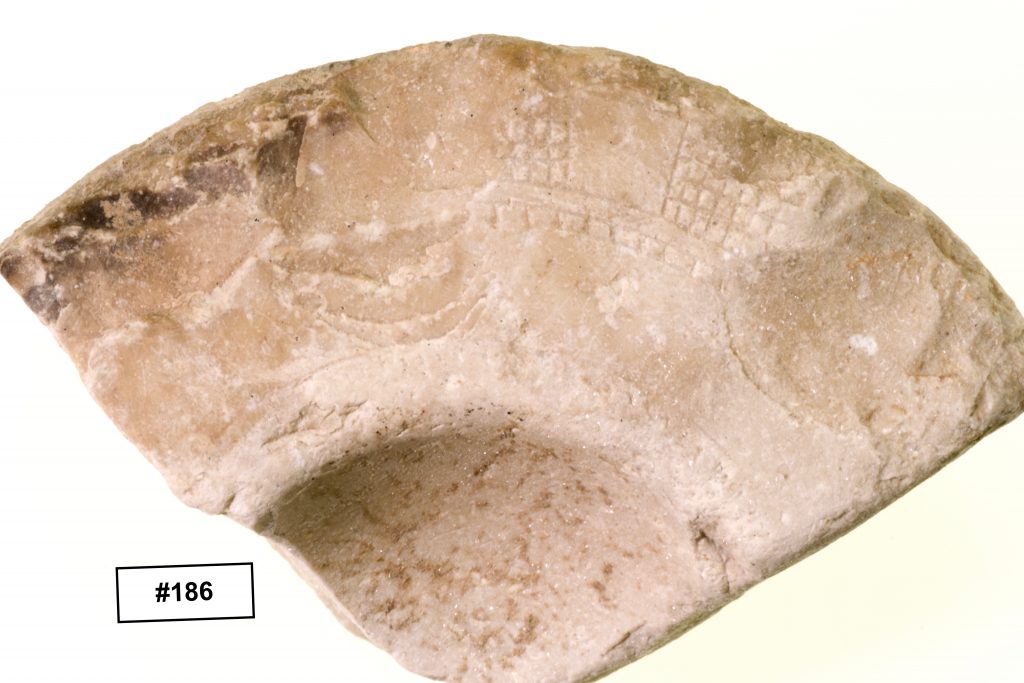A Pierre and Patricia Bikai Fellowship at ACOR was awarded to Betty Adams for spring 2020. She is a graduate student in Near Eastern Archaeology at La Sierra University in Riverside, California, where her studies have concentrated on the chemistry and composition of ancient makeup as represented by traces remaining on artifacts from ancient Jordan.
For the last hundred years, the archaeological community has assumed that certain palettes and mortars found at archaeological sites in Jordan were used to prepare and contain cosmetics—but were they really? And even if they were, had the makeup compounds been created with local ingredients or brought in through trade? These were some of the questions I hoped to address while in Jordan thanks to the Pierre and Patricia Bikai Fellowship.
Once I had compared the forms of cosmetic palettes and mortars from the sites of Tall al-‘Umayri and Khirbat al-Balu’a and performed non-destructive analysis of residues found on them, my research goal became a broader investigation. Did a link exist between cosmetic palettes uncovered at a variety of sites in Jordan from the late Bronze Age (1550–1200 BC) through the Iron Age (ca. 1200–330 BC)? And could I determine the extent of potential cosmetic adornment in ancient Jordan?
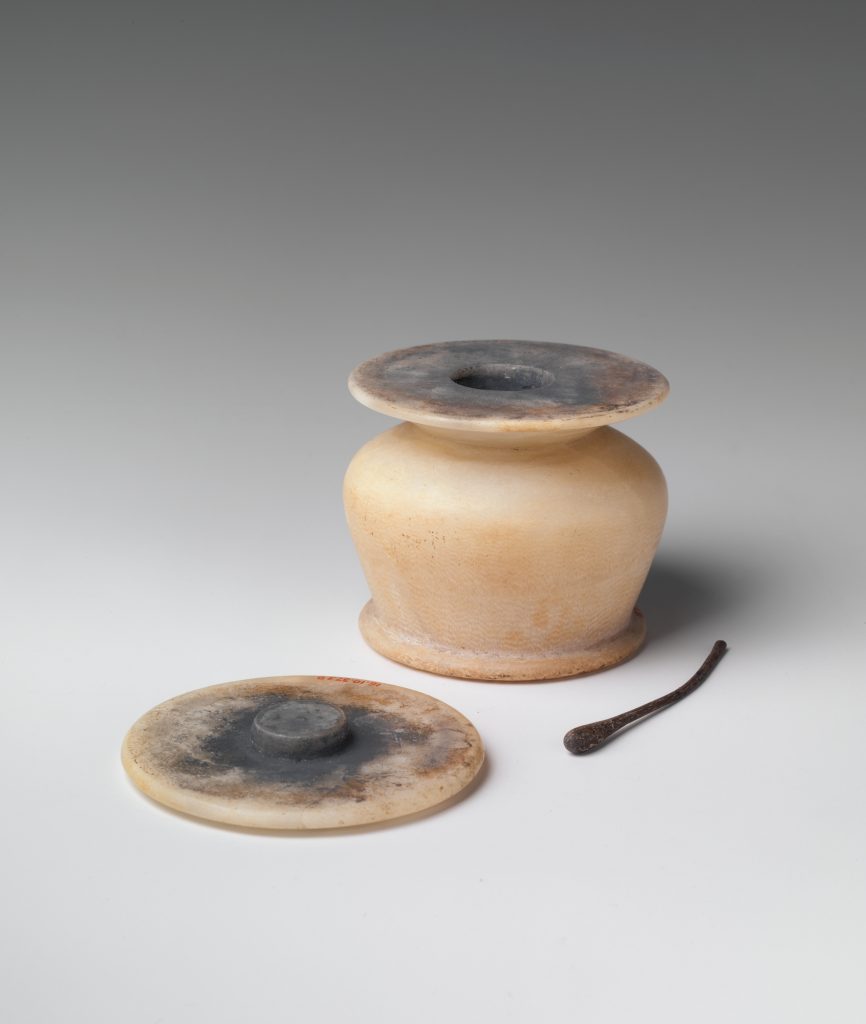
While chemical residue analyses have been completed on several Egyptian artifact types, such as kohl in tubes and on applicators,* stone cosmetic palettes from Jordan seem not to have been examined in this way. The residue analyses on Egyptian artifacts returned a series of ingredients that included galena (lead sulfide, used as eyeliner), stibium (also used for eye makeup), and fat**, which served as a base for many kinds of cosmetics. These data points served as a starting point for our residue analyses of the ‘Umayri artifacts.
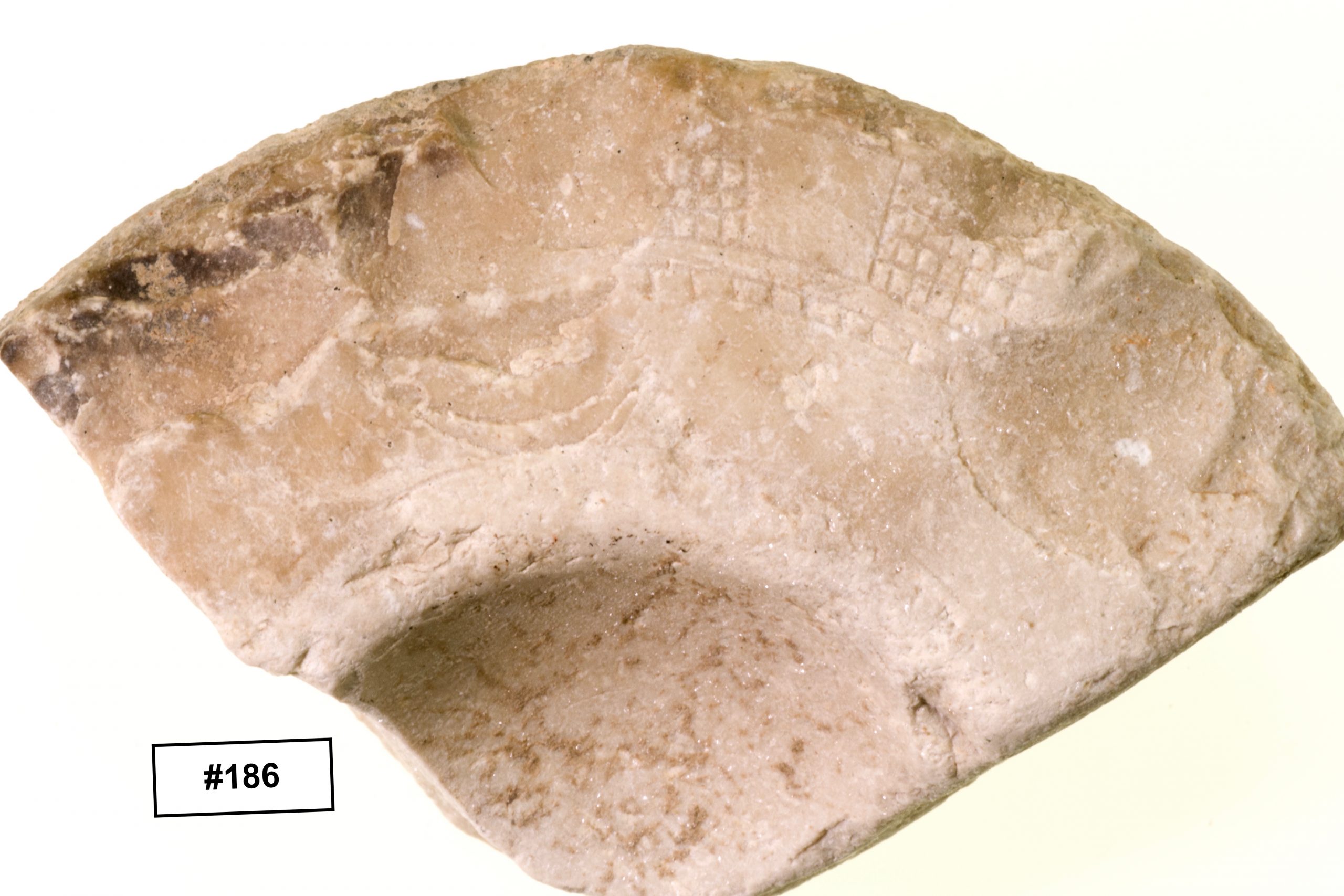 |
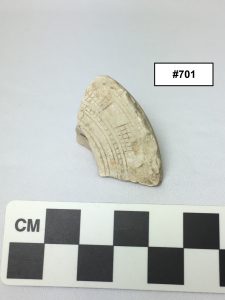 |
La Sierra University cosmetic palette fragments #186 and #701, both limestone from Tall al-‘Umayri excavations. #186 by Betty Adams. #701 by Vera Kopecky, Center for Near Eastern Archaeology, LSU.
We performed SEM-EDS analysis on cosmetic palette fragment #186 in the lab at the University of California, Riverside. In SEM-EDS, a scanning electron microscope—which employs a beam of electrons to produce an image of the surface of an object with staggeringly fine detail—is used along with an energy-dispersive X-ray detector, or EDS. Because the electron beam of the SEM excites the atoms in the sample, the EDS can “read” the atomic structures that are present and tell us what elements are present. In the case of #186, SEM-EDS found copper, a common coloring agent in ancient cosmetics, and a high carbon content that indicates the presence of organic material.
A sample of residue extracted from palette fragment #701 allowed us to subject it to gas chromatography, which separates out the chemical compounds in the sample. These are then analyzed through mass spectrometry, a technique in which the separated compounds are subjected to ionization (bombardment by electrons). The result is chromatograms that allow us to identify substances present. This was done in the La Sierra University chemistry labs by Dr. Jennifer Helbley, who documented a variety of fatty acids, steroids, and alcohols.
Dr. Helbley used infrared spectrometry on pestle #5054. This type of analysis relies on the different ways that substances absorb and effect wavelengths of infrared light. This pestle was shown to have hematite and a possible mixture of minerals such as esseneite and shulamitite, which occur naturally in Jordan and elsewhere. These three minerals, all reddish-brown because of their iron content, could have provided color.
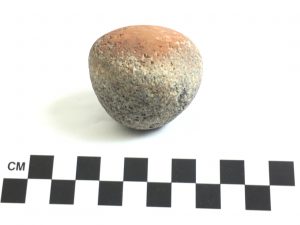
Seventeen cosmetic items from the La Sierra University (LSU) collection went through a series of particle component analyses (PCA) and partial least squares-discriminant analysis (PLS-DA) (on Progenesis software) at the Institute for Biological Chemistry at Washington State University to determine if chemical signatures were present on the palettes and if the chemical compounds from the residue present were associated with palettes and mortars of specific forms. The initial indications are forms of the palettes did indeed group based on the chemical signatures, based on models run by Dr. Anna Berim, research associate at WSU. This demonstrated that the cosmetic mortars and palettes are more similar to each other than they are to what we call “perfume pots.” We intend to run these same types of analyses on the residue retrieved from palettes excavated at various sites in Jordan in order to build a picture of adornment patterns throughout the region.
Since 2018 we have been working with these stone objects, and last summer we tested a field-analysis system that allows us to complete non-destructive testing on cosmetic palettes and mortars from sites in Jordan.
While the worldwide pandemic has temporarily halted my fellowship studies in Jordan, I look forward to resuming work with the Department of Antiquities and sharing the resulting information in a database available to all researchers. Our hope is this data will give us starting points for answering the research questions noted and for expanding our knowledge of cosmetic adornment in Jordan in antiquity.
* Issa Tapsoba, S. Arbault, P. Walter, and C. Amatore, “Finding Out Egyptian Gods’ Secret Using Analytical Chemistry: Biomedical Properties of Egyptian Black Makeup Revealed by Amperometry at Single Cells,” Analytical Chemistry 82(2) (2010): 483. Doi:10.1021/ac902348g.
** David A. Scott, “A review of ancient Egyptian pigments and cosmetics,” Studies in Conservation 61(4) (2016): 185–202.

